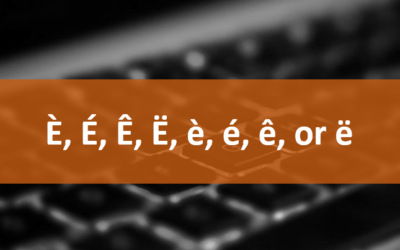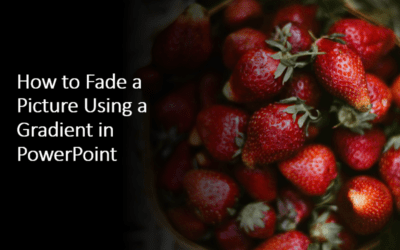Microsoft Visio: Introduction
Microsoft Visio Training Series | Level 1
Course Details
Duration: 1 day (9 am – 4 pm)
Microsoft® Visio® Professional Versions: 2013 | 2016 | 2019 | 365 (Windows)
Delivery Methods (Instructor-led): In-person (Live classroom) | Virtual classroom
Course Dates: Contact us at info@avantixlearning.ca to arrange a date | View schedule ![]()
Course Fee: $275 CAD per person + HST (Virtual classroom), $295 CAD per person + HST (Bring your own device for live classroom courses) or $345 CAD per person + HST (Avantix Learning provides device for live classroom courses)*
Timing: Public scheduled courses run from 9:00 am to 4:00 pm (Eastern Time).
Virtual classroom courses: Our instructor-led virtual classroom courses are delivered in a virtual classroom environment. Students will be sent a virtual classroom invitation prior to the course.
In-person courses: Our instructor-led live classroom (in-person) courses are held in downtown Toronto at the Toronto Star Building, 1 Yonge Street, Suite 1801. Some courses are also held at an alternate downtown Toronto location.
Custom training: This course may be delivered at your site or ours as an instructor-led or virtual classroom solution. Contact us at info@avantixlearning.ca for more information including savings for custom group training.
Course Overview
This introductory Visio course is designed for those new to Visio who want to create professional-looking business and technical drawings. Students will build diagrams using templates, stencils and master shapes and will use various tools to enhance these diagrams using shapes, tools and formatting strategies. Different types of drawings will be created including flow charts, organization charts, floor plans and brainstorming diagrams.
Prerequisite: Comfortable using Microsoft Excel or Microsoft Word.
INCLUDED IN THIS COURSE
- Comprehensive course manual
- Keyboard shortcuts quick reference
- Sample and exercise files
- Refreshments (for classes conducted in Avantix Learning classrooms)
- Certificate of completion
- Follow-up email support
Course Topics
Working in Microsoft Visio Environment
- Creating a drawing from a template
- Overview of master shapes, stencils and templates
- Working with the Ribbon and the Quick Access Toolbar
- Parts of the Visio window
- Displaying and hiding the Shapes window
- Scrolling in a document
- Zooming in and out quickly and easily
- Changing the measurement system
- Setting the scale
Inserting and Manipulating Basic Shapes
- Creating basic shapes using the Shapes window
- Using the dynamic grid
- Resizing and repositioning shapes
- Rotating shapes
- Duplicating shapes
- Key settings for shapes
- Using different stencils
- Finding shapes
- Grouping objects
- Aligning and distributing objects
Formatting Shapes
- Using themes
- Applying text and fill colours
- Adding line/border formatting
- Enhancing shapes with special effects
Inserting and Manipulating Text
- Adding text to shapes
- Rotating text in shapes
- Editing text
- Formatting shape text
Connecting Shapes
- Connecting shapes in different ways
- Dynamic vs static connectors
- Selecting connectors
- Deleting connectors
- Changing connectors
- Different types of glue
- Automatically connecting shapes
Creating Master Shapes and Custom Stencils
- Creating and saving a custom stencil
- Adding new master shapes to a custom stencil
- Renaming new master shapes
Inserting Images
- Inserting images
- Resizing an image using different strategies
- Applying formatting to images
Working with Pages
- Inserting pages
- Naming pages
- Duplicating pages
- Changing page order
- Deleting pages
Applying Background Pages
- Applying background pages with headers and footers
- Creating a background page
- Naming a background page
- Applying a background page to a drawing page
Working with Layers
- Creating layers
- Assigning shapes to layers
- Displaying specific layers
- Deleting a layer
Using Containers
- Inserting containers
- Adding shapes to containers
- Locking containers
Creating Basic and Cross-Functional Flowcharts
- Creating basic flowcharts
- Connecting shapes automatically
- Making point-to-point connections
- Routing connectors
- Using line-curve connectors
- Creating cross-functional flow charts
- Adding swimlanes
Creating Organization Charts
- Designing an organization chart from scratch
- Inserting subordinates
- Adding multiple shapes quickly
- Creating an organization chart from Excel data
- Changing styles
- Changing spacing
Creating Brainstorming Diagrams
- Adding shapes to a brainstorming diagram
- Connecting brainstorming shapes
- Formatting the shapes
Designing Floor Plans
- Creating a floor plan
- Adding space
- Adding walls
- Drawing to scale
- Adding doors, windows and furniture
Previewing and Printing
- Previewing a drawing
- Specifying print options
*Prices subject to change.
Our instructor-led courses are delivered in virtual classroom format or at our downtown Toronto location at 18 King Street East, Suite 1400, Toronto, Ontario, Canada (some in-person classroom courses may also be delivered at an alternate downtown Toronto location). Contact us at info@avantixlearning.ca if you'd like to arrange custom instructor-led virtual classroom or onsite training on a date that's convenient for you.
Copyright 2024 Avantix® Learning

Custom Training
Register now for a public scheduled course or contact us to arrange custom training at your site or ours.
Related courses
Microsoft Visio: Intermediate (Professional)
Microsoft Excel: Intermediate / Advanced
Microsoft PowerPoint: Intermediate / Advanced
Microsoft Project: Introduction
You may like
How to Replace Zeros (0) with Blanks in Excel
There are several strategies to replace zero values (0) with blanks in Excel. If you want to replace zero values in cells with blanks, you can use the Replace command or write a formula to return blanks. However, if you simply want to display blanks instead of zeros, you have two formatting options – create a custom number format or a conditional format.
What is Power Query in Excel?
Power Query in Excel is a powerful data transformation tool that allows you to import data from many different sources and then extract, clean, and transform the data. You will then be able to load the data into Excel or Power BI and perform further data analysis. With Power Query (also known as Get & Transform), you can set up a query once and then refresh it when new data is added. Power Query can import and clean millions of rows of data.
How to Freeze Rows in Excel (One or Multiple Rows)
You can freeze one or more rows in an Excel worksheet using the Freeze Panes command. If you freeze rows containing headings, the headings will appear when you scroll down. You can freeze columns as well so when you scroll to the right columns will be frozen.
How to Show or Hide Gridlines in Excel
You can remove or hide gridlines in Excel worksheets to simplify worksheet design. By default, gridlines are displayed but do not print. Gridlines are applied to entire worksheets or workbooks, not to specific cells. If you hide gridlines on one worksheet, it doesn't affect other sheets in the same workbook.
How to Insert or Type E with an Accent Mark in PowerPoint (È, É, Ê, Ë, è, é, ê, or ë)
You can insert or type e with an accent mark in PowerPoint using built-in tools or keyboard shortcuts (including Alt code shortcuts). The letter e can be inserted with an accent in both upper or lower case in text boxes or placeholders on slides, the slide master or layouts. The following are common accents in upper or lower case – È, É, Ê, Ë, è, é, ê, or ë.
How to Combine First and Last Name in Excel (5 Ways)
You can combine first and last name in Excel in several ways – using the CONCATENATE operator, the CONCATENATE function, the CONCAT function, the TEXTJOIN function or Flash Fill. These functions are often used to combine text in cells but you can also combine text with spaces, commas, dashes or another character. It's common to combine first and last names that appear in two columns into one new column. Some functions are only available in newer versions of Excel but the CONCATENATE operator and function are available in all versions.
How to Insert Multiple Columns in Excel (4 Fast Ways with Shortcuts)
You can quickly insert multiple columns in Excel using a drop-down menu, keyboard shortcuts or the Home tab in the Ribbon. The key to inserting multiple columns at once, rather than one by one, is to select the number of columns you want to insert first and then insert columns. Excel will insert the same number of columns you selected.
How to Fade a Picture or Part of a Picture in PowerPoint (Using a Gradient)
You can fade a picture in PowerPoint by drawing a rectangle shape on top of the picture and then filling the rectangle with a gradient from opaque to transparent. This technique is often used to fade an image into the background of a slide. Since the rectangle is placed on top of the image and then text may be placed on top of the rectangle, you may need to reorder the objects.
You may also like
How to Insert or Type I with an Accent Mark in Word (Í, í, Ì, ì, Î, î, Ï, or ï)
You can insert or type i with an accent mark in Word using built-in tools or keyboard shortcuts (including Alt code shortcuts). The letter i can be inserted with an accent in both upper or lower case. The following are common accented characters that you can insert or type in Word in upper or lower case: grave (Ì or ì), acute (Í or í), circumflex (Î or î) and umlaut (Ï or ï).
How to Insert or Type A with an Accent Mark in Word (À, Á, Â, Ä, à, á, â, or ä)
You can insert or type a with an accent mark in Word using built-in tools or keyboard shortcuts (including Alt code shortcuts). The letter a can be inserted with an accent in both upper or lower case. The following are common accented characters that you can insert or type in Word in upper or lower case: grave (À or à), acute (Á or á), circumflex (Â or â) and umlaut (Ä or ä).
10 Word Shortcuts to Select Text Using a Keyboard
You can use several shortcuts in Word to select text in your documents using only your keyboard. When you select text, it will typically be highlighted in grey. After you select text, you can cut, copy, or delete the selected text or apply character or paragraph formatting.
Microsoft, the Microsoft logo, Microsoft Office and related Microsoft applications and logos are registered trademarks of Microsoft Corporation in Canada, US and other countries. All other trademarks are the property of the registered owners.
Avantix Learning |18 King Street East, Suite 1400, Toronto, Ontario, Canada M5C 1C4 | Contact us at info@avantixlearning.ca











